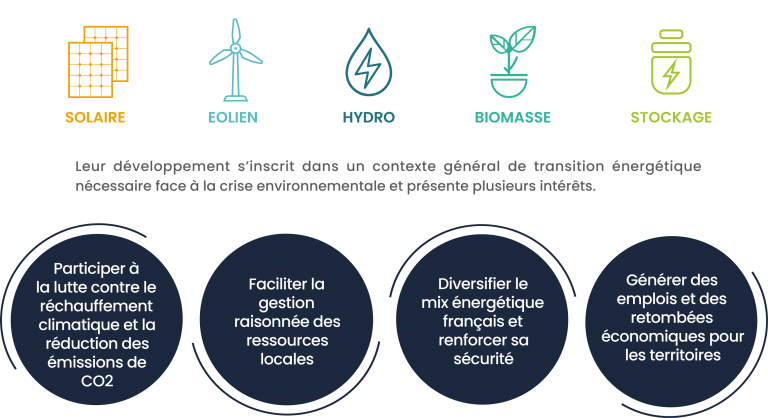The background to energy transition
What are renewable energies?

What is the ultimate aim of energy transition?
A transition to the green economy is imperative because of the pressures exerted by mankind on the environment. It is now essential to create a resilient, safe and viable energy model to reduce man’s environmental impact by radically modifying current production and energy consumption modes.
That is the purpose of the energy transition:
- strive towards restraint and energy efficiency
- diversify our sources of production by developing renewable energies
What are the aims of public policy?
The Loi de la transition énergétique pour la croissance verte (law on energy transition for green growth) of 17 August 2015 sets ambitious targets:
- Cutting greenhouse gas emissions by 40% between 1990 and 2030,
- Reducing primary energy consumption of fossil energies by 30% in 2030,
- Increasing the proportion of renewable energies to 32% of gross final energy consumption in 2030,
- Reducing the proportion of nuclear energy in power generation to 50% by 2025.
More recently, a government decree of 21 April 2020 sets development targets for all renewable energies by 2028. By then, the target for onshore wind power is set at roughly 35,000 MW. This represents nearly twice as much generating capacity in 8 years.